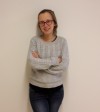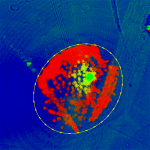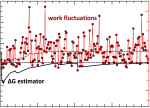This is an old revision of the document!
Applied Interface Physics
Group of Prof. Markus Valtiner
Our research focuses on the broad areas of adhesion, friction as well as interfacial forces and their utilization for making better energy-saving, energy efficient, cheaper, long lasting smart materials for application in structural and functional materials. We are also interested in dynamic interaction forces, single molecular interactions and soft matter physics in confined spaces. Our aim is to gain insight into the fundamental interactions in complex interfacial processes, and to translate fundamental science into knowledge-based design of better and novel structural and functional materials for technological applications. We are in particular interested in:
- Fundamental work on interfacial forces, interfacial structures and tribology under (electrochemically active) variable environmental conditions.
- The effect of (electro-)chemical reactions on interfacial interactions with a particular focus on structural effects in confined spaces and complex environments.
- Characterization of specific interactions and recognition in biologic systems
- Design of novel experiments for measuring surface forces
- Measurement, understanding and ultimately prediction of properties of surfaces, interfaces and thin films over large length and time scales.
- Design and utilization of model experiments and tunable thin films and interfaces using unique bio-mimetic and molecular design concepts.
- Development and establishment of new experimental techniques for surface and interface analysis.
- Preparation and characterization of advanced functional materials with smart properties.
- Corrosion and reactivity in confined spaces (crevice corrosion, SCC)
- Structuring of ionic liquids and solutions of ionic liquids at charged and uncharged interfaces
Group news
Nice weather from the UK
 The arrival of our new Postdoc Laura Mears coincided with beginning of spring in Vienna. Laura brought the pleasant temperatures from the University of Liverpool.
Welcome to our group!
The arrival of our new Postdoc Laura Mears coincided with beginning of spring in Vienna. Laura brought the pleasant temperatures from the University of Liverpool.
Welcome to our group!
We are hiring!
Together with our collaboration partner from Medical University of Vienna we are hiring a master student (f/m) in the field of tissue glueing - start date asap - check the offer here!
Group finally reunited
 With Laila Moreno Ostertag joining us from Max-Planck-Institut für Eisenforschung in Düsseldorf, Germany, our group is finally completely reunited. As a PhD student Laila is working on single-molecule experiments to elucidate adhesive interactions. Welcome to Vienna!
With Laila Moreno Ostertag joining us from Max-Planck-Institut für Eisenforschung in Düsseldorf, Germany, our group is finally completely reunited. As a PhD student Laila is working on single-molecule experiments to elucidate adhesive interactions. Welcome to Vienna!
Title series #1: Lab Executive
 Our international group realized that in Austria titles are highly prestigious.
In order to retrace this culture our group came up with own titles.
At random intervals we present some of our functions.
After 4 month as a Laboratory Executive Dominik Dworschak passed his responsibility to Pierluigi Bilotto. He will hold this office in February. His tasks are among others to keep the lab clean and order consumables.
Our international group realized that in Austria titles are highly prestigious.
In order to retrace this culture our group came up with own titles.
At random intervals we present some of our functions.
After 4 month as a Laboratory Executive Dominik Dworschak passed his responsibility to Pierluigi Bilotto. He will hold this office in February. His tasks are among others to keep the lab clean and order consumables.
Growth of our Group
 Claudia Merola joined our group from Max-Planck-Institut für Eisenforschung in Düsseldorf, Germany. In her PhD thesis she deals with better understanding of the beginning stage of crevice corrosion. Welcome to Vienna!
Claudia Merola joined our group from Max-Planck-Institut für Eisenforschung in Düsseldorf, Germany. In her PhD thesis she deals with better understanding of the beginning stage of crevice corrosion. Welcome to Vienna!
Our first Master students
 We are very happy to welcome our first Master students.
Maximilian Lengauer is a student of physics at TU and deals with lipid bilayers.
Yana De Smet from Hasselt University reached us via the Erasmus Programme. She works on biomineralization of calcium phosphates.
Welcome to our group, Max and Yana!
We are very happy to welcome our first Master students.
Maximilian Lengauer is a student of physics at TU and deals with lipid bilayers.
Yana De Smet from Hasselt University reached us via the Erasmus Programme. She works on biomineralization of calcium phosphates.
Welcome to our group, Max and Yana!
Beam time in Taiwan
 Our Postdoc William Cheng was in Taiwan working with our new X-SFA. Together with Frank Uwe Renner (Hasselt University) and Claudia Merola (Max-Planck-Institut für Eisenforschung) he performed experiments at National Synchrotron Radiation Research Center. Stay tuned for the results!
Our Postdoc William Cheng was in Taiwan working with our new X-SFA. Together with Frank Uwe Renner (Hasselt University) and Claudia Merola (Max-Planck-Institut für Eisenforschung) he performed experiments at National Synchrotron Radiation Research Center. Stay tuned for the results!
Not so new anymore
Recent work
In situ nano- to microscopic imaging and growth mechanism of electrochemical dissolution (e.g., corrosion) of a confined metal surface
Reactivity in confinement is central to a wide range of applications and systems, yet it is notoriously difficult to probe reactions in confined spaces in real time. Using a modified electrochemical surface forces apparatus (EC-SFA) on confined metallic surfaces, we observe in situ nano- to microscale dissolution and pit formation in well-defined geometries in environments relevant to corrosion processes. Read more in PNAS.
One molecule at the time: Probing surface-to-molecule bonds - Bias and work dissipation
The capabilities of Atomic Force Microscopes and Optical Tweezers to probe unfolding or surface-to-molecule bond rupture at a single-molecular level are widely appreciated. Our recent results provide new insights into stability and work dissipation mechanisms at adhesive interfaces at the single-molecular level, and offer important design and analysis aspects for single-molecular surface-to-molecule experiments. Want to know more? Read our article in this Langmuir special issue.




